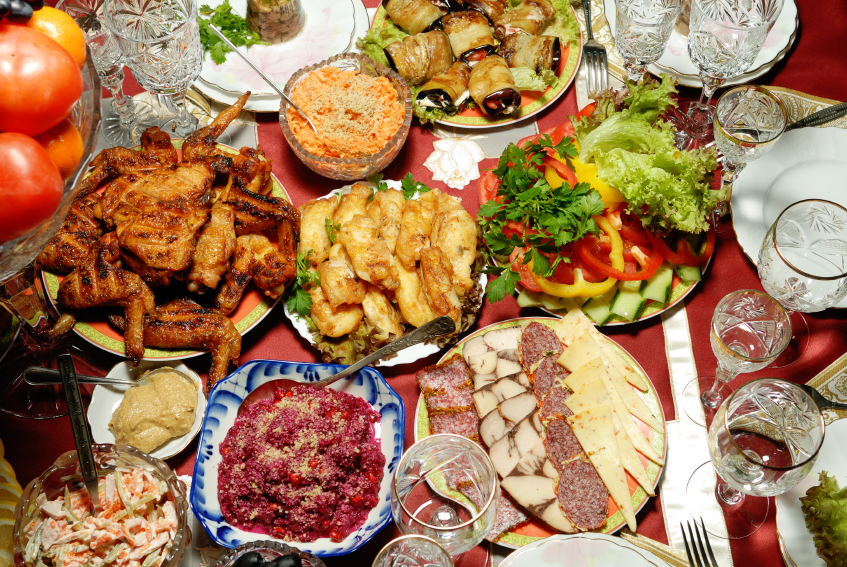As the holidays approach, people are likely to leave food out for hours at a time during holiday parties and other festivities.
For some foods, this is completely fine. Others, not so much. The last thing any good host or hostess wants is people waking up the morning after the party, feeling sick as a dog.
Check out our food safety tips below, provided by the USDA, sure to keep you and your guests happy and healthy this season.
- Can I shop in a way that will keep food safe to eat? Don’t let the supermarket’s layout dictate the order in which you buy your groceries. Pick up your perishables last to be sure they don’t stay in your cart too long, and store raw meat and poultry apart from other items in your cart. Perishables should be refrigerated within two hours. (That drops to one hour if it’s 90 degrees or hotter outside.)
- I’m not quite ready to use my meat. How many days do I have before it becomes unsafe and where do I store it? Plan to use fish, poultry and most meats within two days; non-ground beef, veal, pork and lamb within three to five days. If you’re freezing meet, do it within two days and use a freezer bag around the original packaging. Make sure your refrigerator is 40 degrees or below.
- What’s the easiest way to prevent cross-contamination? Be sure to wash hands thoroughly before and after touching raw meat or poultry.
- Any extra prep steps before cooking? Wiping down countertops and cutting boards isn’t good enough. Try sanitizing with a solution of a tablespoon of liquid chlorine bleach in a gallon of water.
- How do I marinate meat while simultaneously keeping it fresh? If marinating meats, use a covered dish and store in the refrigerator, not the countertop. You may re-use marinades on the meat only if you first bring it to a boil to kill any bacteria.
- How do I know the food I cooked is safe to eat? Make sure all meat is cooked to an internal temperature of 145 degrees. Use a meat thermometer to measure. Be sure all utensils are clean, and utensils used in preparation aren’t used in serving.
- My family doesn’t do holiday soirees, but we do tailgate. Any tips for us? Follow your same rules of safe food preparation when you take your game on the road. Bonus tips from St. Elizabeth dietitian Karah Stanley: Use (and don’t re-use) paper plates if getting seconds or revisiting the tailgate post-game. Make sure to throw out food if it’s been sitting out too long, and make sure your grilled items aren’t overly charred.
- These leftovers look a little questionable, should I just heat and try a bite to see if they’re still good? There’s an app for that. The USDA’s Foodkeeper app (available for Apple and Android) can help you decide if those leftovers are still good. Pro tip: If you can’t tell what it is, it’s probably not good anymore.
- When I’m reheating leftovers, does it still have to reach a certain temperature? If reheating leftovers, you should reach an internal temperature of 165 degrees to be sure to kill any bacteria.
- What if someone still gets sick? According to the USDA, there are more than 48 million cases of foodborne illness in the United States annually. Often, foodborne illness symptoms are similar to flu symptoms. If symptoms are severe, or if the affected person is from an at-risk group (children, pregnant women, older people, people with weakened immune systems), seek medical attention. If the suspected food was from a restaurant or served to a large gathering, the USDA advises contacting your local health department.

